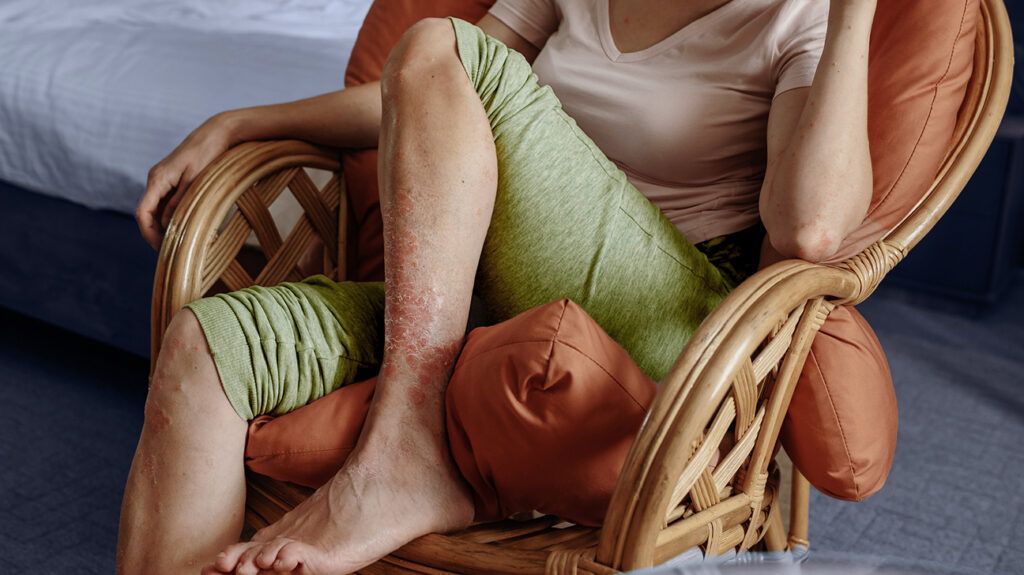Psoriasis is an autoimmune condition that results in itchy and sometimes painful skin lesions. The Koebner phenomenon occurs when new lesions form on previously healthy skin after an injury.
Read on to learn more about the causes, symptoms, and treatment of this phenomenon.

Research suggests that 25–30% of people with psoriasis experience the Koebner phenomenon, also known as the isomorphic response. The term refers to the development of psoriatic lesions on previously unaffected areas of skin following a skin injury.
Researchers are investigating the role of the immune system in producing this response. Doctors may describe people who experience the Koebner phenomenon as being Koebner-positive. Someone who is Koebner-negative may become Koebner-positive later in life.
The Koebner phenomenon also occurs with some other skin conditions, including vitiligo and lichen planus.
The Koebner phenomenon can occur after a skin injury in someone with psoriasis. It causes lesions to form on areas of the skin without any health issues. These symptoms may appear on areas of the body that psoriasis does not usually affect, such as on the penis or around the eyes.
“Somebody traumatizes the skin, and the disease shows up in the traumatized skin,” Dr. Mark Lebwohl, MD, a professor of dermatology and Dean for Clinical Therapeutics at Icahn School of Medicine at Mount Sinai in New York, NY, told Medical News Today.
Many types of skin injury and irritation may trigger the isomorphic response, even when they are mild. They include:
- cuts, scrapes, scratches, or other wounds
- thermal, electrical, chemical, or radiation burns, including sunburn
- eczema, dermatitis, or skin infections
- animal or insect bites
- surgical incisions
- injections
- piercings
- tattoos
- frostbite
- razor burns
A 2021 study looked at the effects of wearing face masks during the COVID-19 pandemic. It found that some people with psoriasis developed Koebner phenomenon in areas that came into contact with face masks, such as the cheeks, mouth, nose, and the skin around the ears.
New lesions commonly appear
Multiple cells and molecules appear to play a role in the isomorphic response.
“The exact physiologic mechanism involved in the Koebner phenomenon is not entirely known,” said Dr. Lebwohl. “It’s possible that traumatizing the skin may release some of the autoimmune factors involved in the cascade of events that lead to psoriasis being triggered.”
Psoriasis is an autoimmune condition where the immune system attacks healthy tissues, causing inflammation.
Recent research suggests that tissue-resident memory T (TRM) cells play an important role in psoriasis. These cells help the immune system recognize and respond to threats.
There is growing evidence that TRM cells may also mistake otherwise harmless triggers as threats, report the authors of a 2020 review. This misidentification may contribute to the development of autoimmune diseases such as psoriasis.
TRM cells reside in the skin, lymph nodes, or other tissues. Some of them produce interleukin (IL)-17 or IL-22. These molecules help drive inflammation in psoriasis.
“Even when you clear the skin completely [of psoriasis symptoms], you can identify IL-17-producing TRM cells,” said Dr. Lebwohl. “So the cells that trigger psoriasis are still there, even though the skin looks normal.”
Skin infections and injuries can cause TRM cells to build up in the skin, possibly accounting for the Koebner phenomenon.
Scientists continue to study the role that TRM cells, IL-17, and other immune cells and molecules may play in the isomorphic response.
Psoriasis lesions
- elbows
- knees
- scalp
The Koebner phenomenon can cause psoriasis lesions to form on body parts that psoriasis does not commonly affect. The lesions tend to be raised, scaly, itchy, and sometimes painful.
A new lesion may affect the skin around the injury that triggered it. Sometimes, a more widespread flare of psoriasis symptoms occurs.
In a 2017 study in Finland, researchers surveyed 48 people with psoriasis who also had tattoos. More than one-quarter reported an isomorphic response on the tattoo within weeks or years of getting it. In addition, three people said that they had a more widespread flare of psoriasis after getting a tattoo.
Doctors may prescribe localized treatments for new lesions from the Koebner phenomenon.
“Koebner is usually limited in extent to a localized area,” said Dr. Lebwohl. “You can treat it locally with creams or with injections of steroids into the area.”
Taking steps to prevent sunburn and other skin injuries may help prevent new lesions from the Koebner phenomenon. It is also important to try to avoid scratching. The authors of a 2017 study note that skin trauma from scratching may cause new psoriatic lesions to form.
According to the National Psoriasis Foundation, treating psoriasis can help reduce disease activity and relieve symptoms, including itchiness, which may help prevent scratching.
Doctors may treat mild-to-moderate psoriasis with light therapy or topical treatments, such as creams. They may prescribe oral or injectable medication for moderate-to-severe psoriasis.
Some people with psoriasis develop new lesions after a skin injury. Even mild injuries or irritation may trigger this Koebner phenomenon.
Scientists continue to study the cause, but multiple immune cells and molecules appear to play a role, including interleukin-17-producing TRM cells.
A doctor may prescribe creams or other local treatments for lesions from the Koebner phenomenon. They may also prescribe additional medications to help control disease activity and relieve psoriasis symptoms.
Taking steps to prevent sunburn and other injuries may help prevent new lesions in people who experience the Koebner phenomenon.
